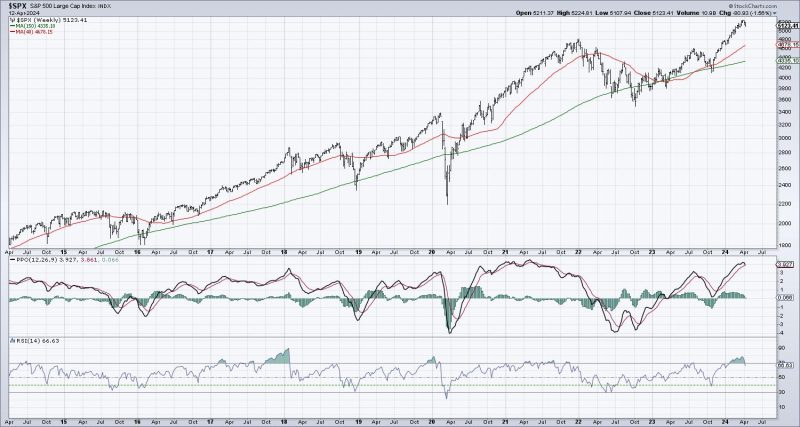The S&P 500 Index is a widely-followed indicator of the overall health of the U.S. stock market, encompassing the performance of 500 large-cap U.S. companies. Recently, the S&P 500 has been flashing major topping signals that have caught the attention of investors and analysts alike. These signals could potentially indicate an upcoming shift in market sentiment and warrant a closer look at current investment strategies.
One of the key indicators signaling a potential market top is the bearish divergence in the Relative Strength Index (RSI). The RSI is a momentum oscillator that measures the speed and change of price movements, and divergences between the RSI and the price can often precede significant market reversals. In this case, the RSI on the S&P 500 is showing lower highs while the index itself continues to climb, suggesting weakening momentum and a possible impending downturn.
Additionally, technical analysis of the S&P 500’s price chart reveals a formation known as a double top pattern. This pattern occurs when the index reaches a high point, retraces, and then rallies back to a similar high before experiencing a significant decline. The double top pattern is considered a bearish signal by many traders, as it indicates a potential exhaustion of buying pressure and a reversal in trend.
Furthermore, market breadth indicators such as the Advance/Decline line have been exhibiting weakness, with fewer stocks participating in the recent market rally. When a relatively small number of stocks are driving market gains while the majority are lagging behind, it can signal a lack of broad-based support and potential fragility in the market’s upward momentum.
Investors are also closely watching interest rates, as rising rates can put pressure on stock valuations and affect investor sentiment. The recent uptick in bond yields has raised concerns about the impact on equity markets, as higher borrowing costs can potentially dampen corporate earnings and hinder economic growth.
In light of these various topping signals on the S&P 500, investors may be wise to exercise caution and reevaluate their investment strategies. Diversification, risk management, and staying informed about market developments are essential components of navigating potential market downturns and protecting investment portfolios.
While timing market shifts with precision is notoriously difficult, being aware of warning signs and adapting to changing conditions can help investors weather market volatility and make more informed decisions. As always, seeking guidance from financial professionals and staying informed about market trends can help investors navigate uncertainties and position themselves for long-term success in an ever-evolving financial landscape.

